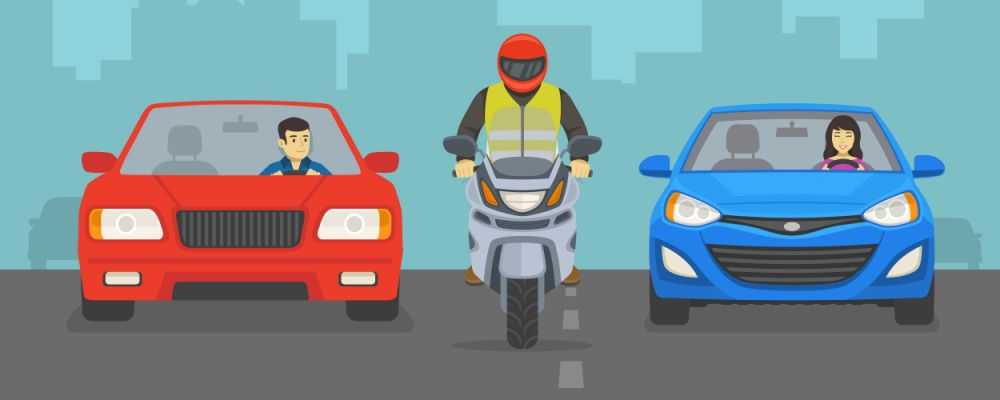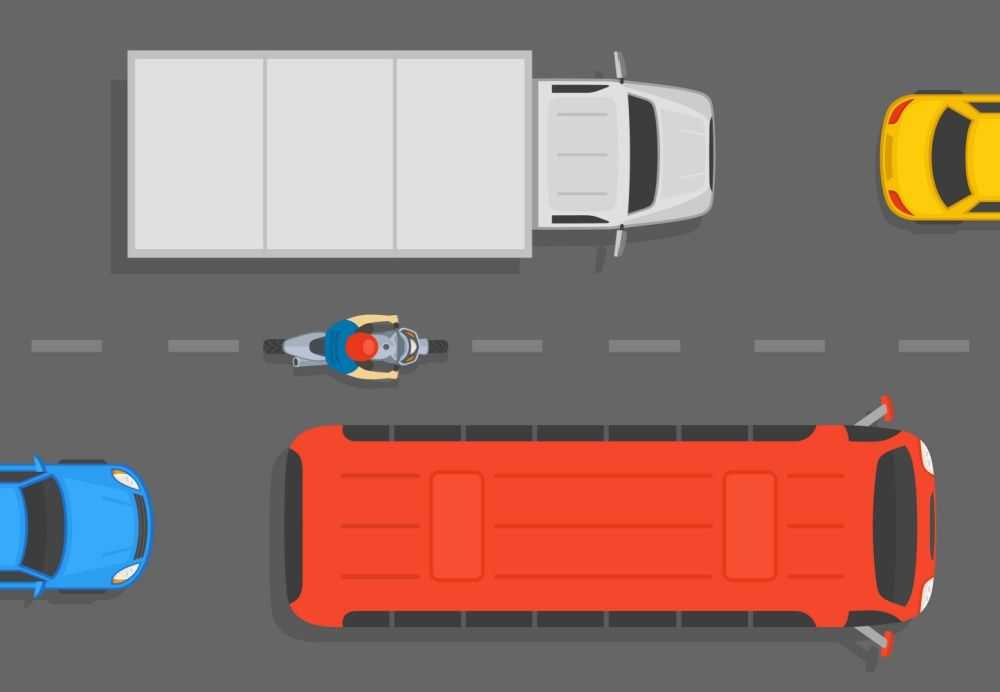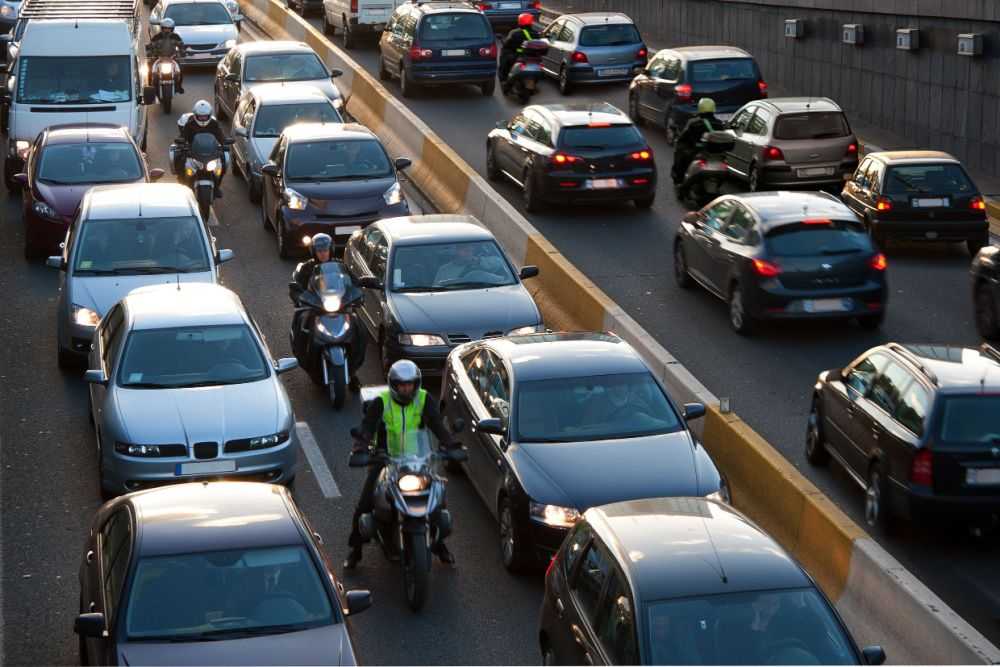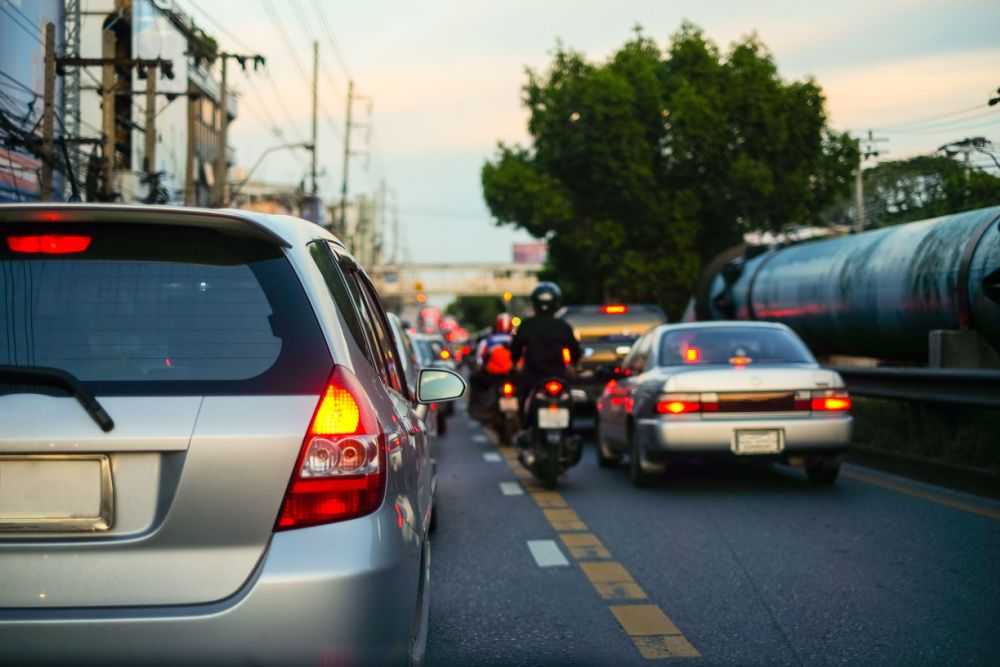
Everything You Need to Know About Filtering on Your Motorbike
Lane splitting, or filtering, is the act of riding through stationary or slowly moving traffic. This could be between vehicles in multiple lanes or riding around the car-driver’s side of stopped or slow-moving vehicles on single-carriageways.
Typically seen as one of the biggest perks of riding a motorcycle, the act of filtering may also come with a number of associated benefits including reduced emissions, time and fuel saved, reduced congestion for all road users, and the ability to almost completely avoid congestion simply by riding past it.
Filtering, done properly, can be safe to do but does come with some risks, which is why you need to take care and only filter when you feel you have enough experience, can handle your motorcycle in small manoeuvres, and are aware of the risks.
What is the difference between lane splitting and filtering?
Both of these terminologies are often used interchangeably, with filtering being the term that is utilised more frequently within the UK. Although both of these terms are used to refer to the same concept, the way they are put into practice might be quite different depending on who you are talking to.
Some people use the term "filtering" to describe getting through slower or stationary traffic, while others use the term "lane splitting" to describe getting around traffic while going faster.
Only the term "filtering" is used in the UK Highway Code, but it doesn't specifically define what the term means.
What does the Highway Code say about lane splitting?
The UK Highway Code doesn't make any reference to the term "lane-splitting".
Rule 88 of The Highway Code's Rules for motorcyclists says, "You should be aware of what is behind and to the sides before manoeuvring. Look behind you; use mirrors if they are fitted. When in traffic queues, look out for pedestrians crossing between vehicles and vehicles emerging from junctions or changing lanes. Position yourself so that drivers in front can see you in their mirrors. Additionally, when filtering in slow-moving traffic, take care and keep your speed low." [1]
Rule 160 of The Highway Code's Rules for motorcyclists also states, "Be aware of other road users, especially bicycles and motorcycles who may be filtering through the traffic."

Despite it not being an offence to filter, riding dangerously clearly is an offence. So if you’re “filtering” in a dangerous manner, say by using excessive speed or aggressive manoeuvres, then you could find yourself in trouble with the authorities.
There are some places where you cannot filter; this includes crossing a solid white line, which includes hatched areas with a solid line. Additionally, you should not filter past a moving or stationary vehicle closest to a crossing.
The downsides to lane splitting
Although it is a great way to save time and arrive at your destination faster, lane splitting or filtering does have some downsides and negatives that could affect your decision to do so, or at least cause you to ride with extra care and attention.
Other road users may get frustrated.
Being stuck in traffic and seeing a motorcycle simply ride past you to the front of the queue before heading off ahead of everyone else can be frustrating for some road users; after all, you are waiting in traffic, so why shouldn't the motorcycle?
It's important to keep in mind that some drivers may be against this and may deliberately hinder you from lane splitting, whether it be by moving to the middle of a lane to block you from getting past or by not letting you in. It's important to remain calm in these situations and not get frustrated.
Blind spots
Motorcycles can be notoriously hard to see on the roads, even more so when you are filtering and passing through the blind spots of the vehicles ahead and around you. It's important to maintain a good distance from the vehicles around you and ride defensively, being ready to take action if required.
Additionally, it may be worth using your horn or lights to signal to the road users around you that you are there and in their blind spot. When filtering past larger vehicles such as lorries, take extra care to ensure that the driver has seen you in his mirrors and give them as wide a berth as possible.
Risk of damage
The act of filtering will increase the likelihood of you being involved in an incident and some damage occurring either to your bike or someone else's vehicle. After all, you are squeezing through gaps and working your way past moving vehicles, meaning that at times, you could scrape and damage a vehicle with your motorcycle or handlebar end. In this instance, you are more likely to be the one liable for any damage that may occur due to your decision to filter.
Excessive speed
It's important to maintain a steady speed when filtering and certainly not exceed the speed limit of the road you are riding on. As a motorcyclist, you are already more difficult to see, and riding too fast can make you even harder to see, especially if drivers are not expecting you. Therefore, it's important to manage your speed and not take excessive risks that could endanger you or other road users.
Accident risks
Filtering puts you at greater risk of an accident, this is because you are not in your normal lane position and are at risk from drivers turning right, doing U-turns, and oncoming traffic if you are moving past vehicles using the opposite lane. Therefore, it's important to ride within your limits, and just because you can filter, doesn't mean you should.

Tips for lane splitting safely
There are a few ways you can minimise risk when filtering and follow the rules of the road
1 - Use a responsive gear with plenty of engine braking, allowing you to slow down faster if required.
2 - Take note of the conditions, try not to filter in the wet weather when you know you'll need to cross the broken white lines in the middle of the road to filter as these can be slippery
3 - Try to stay out of blind spots; these are areas where car and truck drivers are unable to see you and could drive into you without knowing that you are there.
4 - Be cautious on motorways; if you are filtering and the speeds start to increase to 40-50mph, evaluate if it would be best to return to the lane and follow the traffic, or continue to filter at your own risk.
5 - Show riding etiquette; if a faster rider catches you when filtering, try not to hold them up and instead let them pass when it is safe to do so. This can make filtering safer for you, as the faster rider can lead the way and make drivers aware that motorcycles are filtering through. Don't try and keep up though, it's not a race!
6 - Look out for everything; try to scan and identify places and hazards where traffic may cross your path, or an obstruction that could hinder you.
7 - Use the horn. The horn is there to make other drivers aware of your presence and can be used while filtering to alert drivers that you are approaching. But don't use it needlessly or excessively as it can come across to other drivers as very aggressive or alarming.
8 - Never enter a closing gap; try to be patient and not make rash or overly audacious moves; there may be a hazard or a car changing lanes you are unaware of.

9 - If you are following other riders that are filtering, try not to follow blindly, look for your own gaps and spaces that the lead rider may have missed.
10 - Ride defensively and not aggressively, riding too aggressively can put you in danger, always be prepared to stop or take evasive action.
Sources
[1] https://www.gov.uk/guidance/the-highway-code/rules-for-motorcyclists-83-to-88
